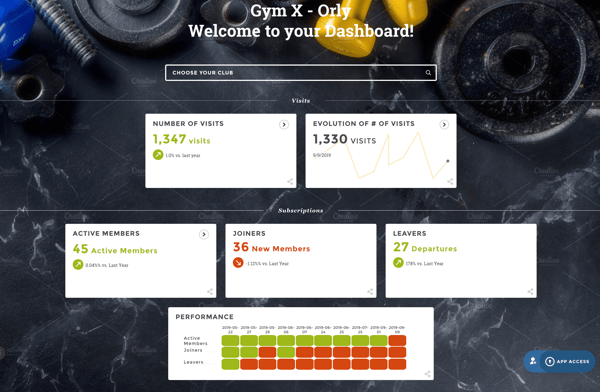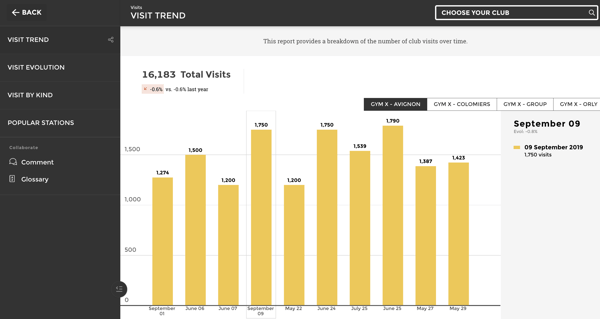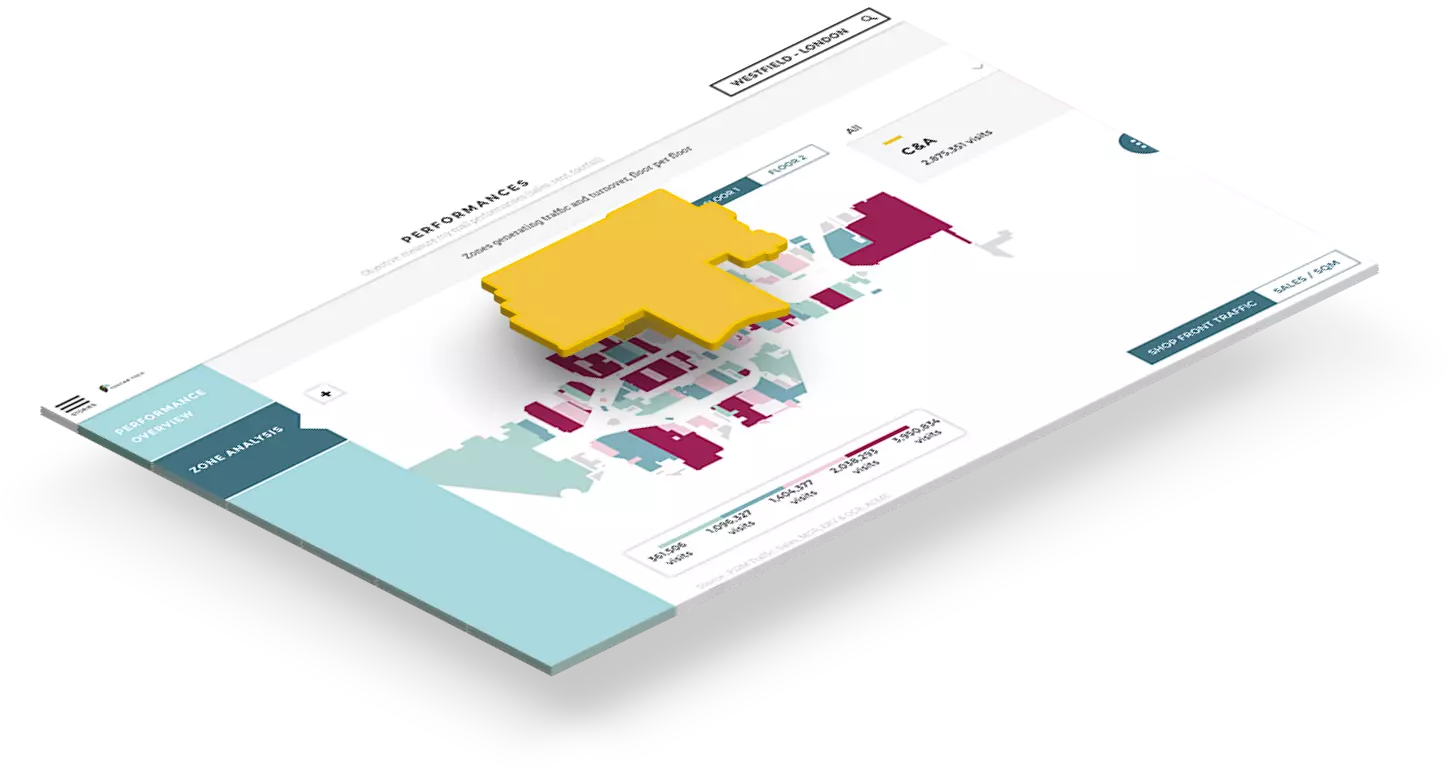With a possible recession on the horizon and uncertainty brewing in the retail world, companies are looking for all the help they can get to build predictive models and weather the storm. The retail analytics market is projected to more than double by 2025, so it is clear that organizations believe analytics can help bolster their bottom lines.

So how does all of this affect you as a retail decision-maker, and why should you care? Tracking sales data, inventory performance, and predicting future performance is vital to any retail business's growth. Analytics simplifies all of these processes, with some solutions offering data ownership for retail employees from top to bottom. Your business may have a robust point of sale (POS) system that tracks tens or even hundreds of data points, and may even already store these data sets in a data warehouse like AWS Redshift. The foundations are set, but how can you actually use your POS data to improve your sales and customer experience?
Let’s say a retail business has a POS system that is paired with a data warehouse. Every day, their POS data is funneled into their data warehouse, which already contains hundreds of terabytes of data sets. When their decision makers try to ask for insights, their structured data simply isn't readable.
An analytics solution can make stored POS data sets useful, turning them into easily readable reports that include relevant KPIs. Whether you implement POS reporting on a weekly, monthly, or quarterly basis, your relevant stakeholders can turn data richness into democratized data that’s usable and actionable.
Point of Sale reporting clearly has the potential to move the needle when it comes to sales, inventory, and employee data. We’ll dive into the functions, benefits, and solutions for reporting your Point of Sale data.
What is a Point of Sale REport?
Point of Sale reports gather all of your POS information to display your organization’s progress. The data comes from any point-of-sale system, including cash registers and self-checkouts. This data is then stored in a database to be manipulated and visualized through KPIs, dashboards, and eventually - reports.
Point of Sale reports answer many of the questions that executives and management need to make improvements, including:
- Which of our product perform the best (or worst)?
- How many products are we selling in X period compared to last year?
- How is our point of sale employee performance?

Point of Sale reports give retail decision-makers answers to these questions, allowing them to address problems or strengthen a successful operation. Maybe you’re a small retail company that sells only a few products, or a retail giant looking to gain insights into thousands of products. Whatever, the case, POS reporting is an asset to any retail business.
POS reporting covers an expansive range of data sets, but three significant categories attract the most attention:
- Employee Transactions
- Inventory
- Sales
To answer all of these questions and address these three categories, a Point of Sale reporting solution must be able to track and report the following:
- Best/worst selling products
- Top Customers
- Employee Pay
- Discounts
- Profits/Liabilities
- Taxes
- Inventory
- Employee Hours Worked
- Sales by Employee and Time Frame
While these are the essential KPIs a Point of Sale report monitors, your company’s data stack and point-of-sale systems may have the capability to track more. The more detailed your report is, the more insights you can glean from your POS data. However, there is a difference between detailed and overwhelming. Including the relevant KPIs will drive more insights from your POS data, but adding too many will simply confuse and frustrate your end users.
The functions of a POS report are undoubtedly expansive and complex, but what benefits can they bring to your retail business?
What are the Benefits of Point of Sale REporting?
Remember those three categories that POS reporting tracks? We’ll dive further into these three categories to explain how they can benefit your retail business.

Tracking Employee Transactions
Without a Point of Sale reporting solution, tracking employee performance is a nightmare. You would need to use software to manually input how many sales your employees are making and calculate commissions.
POS reporting removes the need for manual inputs, drawing on the data collected from your POS system and automatically updating KPIs. As a retail decision-maker, you can be confident in the accuracy of your employee data and reward high-performing employees, while providing extra training and feedback to underperforming team members.
It is commonplace for employees to view analytics and goals on their mobile devices to keep tabs on their goals. With modern-day POS solutions, employees can receive reports on their mobile devices while working to monitor their daily, monthly, and yearly progress.
Managing Inventory
In 2022, inventory data and tracking is arguably the most important aspect of a retail business. Inventory managers must keep a pulse on what products are in higher demand, and wrong decisions can cost retail businesses hundreds and thousands of dollars in dead weight.
POS reporting uses your inventory data to display the best and worst performing items in each category. With a POS report, you can identify:
- If top-selling items are in stock
- If poorly-performing items should be removed
- Predict the next overperforming or underperforming items
Retail businesses cannot afford losses, and a highly-performing POS reporting solution will offer insights through carefully selected KPIs to help manage the volatile nature of inventory management.
Simplifying Sales
When people think of retail sales, they usually think of a customer buying a product and enjoying it. This is far from the truth. Sales cycles have become more complex, adding factors such as lifetime guarantees, returns, gift cards, and rewards programs.
Tracking and understanding these data points at thousands of locations with hundreds of thousands of registers can be a logistics nightmare. Without a streamlined solution to report your POS data, you are bound to jump into errors and uncoordinated chaos. You likely have a POS system that collects data, but how will you use it when it's in the database?
By choosing a POS reporting solution that will clearly lay out your sales data by category, your retail organization can actually use its POS data, unlocking unlimited potential for improvements and employee engagement.
What is the Best POS Reporting Solution?
The retail sector is undergoing an analytics revolution. This transition is proving difficult for many businesses, who are promised a revolutionary POS reporting solution for non-technical users, only to be bamboozled with onboarding costs, confusing interfaces, and necessary coding knowledge.
Toucan’s POS reporting capabilities cater to any business looking for a streamlined solution for non-technical users. By optimizing its applications and reports for mobile devices, your employees can instantly view metrics and adjust to meet short-term goals. Understandable dashboards help inventory managers quickly adjust inventory levels on a real-time basis without a data headache, and instant sharing can distribute your POS reports to all members of the organization.
Today’s retail analytics solution must include access for the non-technical user, clear dashboards, and mobile device optimization. As a team effort, a retail operation needs everyone to be on the same page, and Toucan’s POS reporting capabilities can help a retail business achieve these lofty goals.





